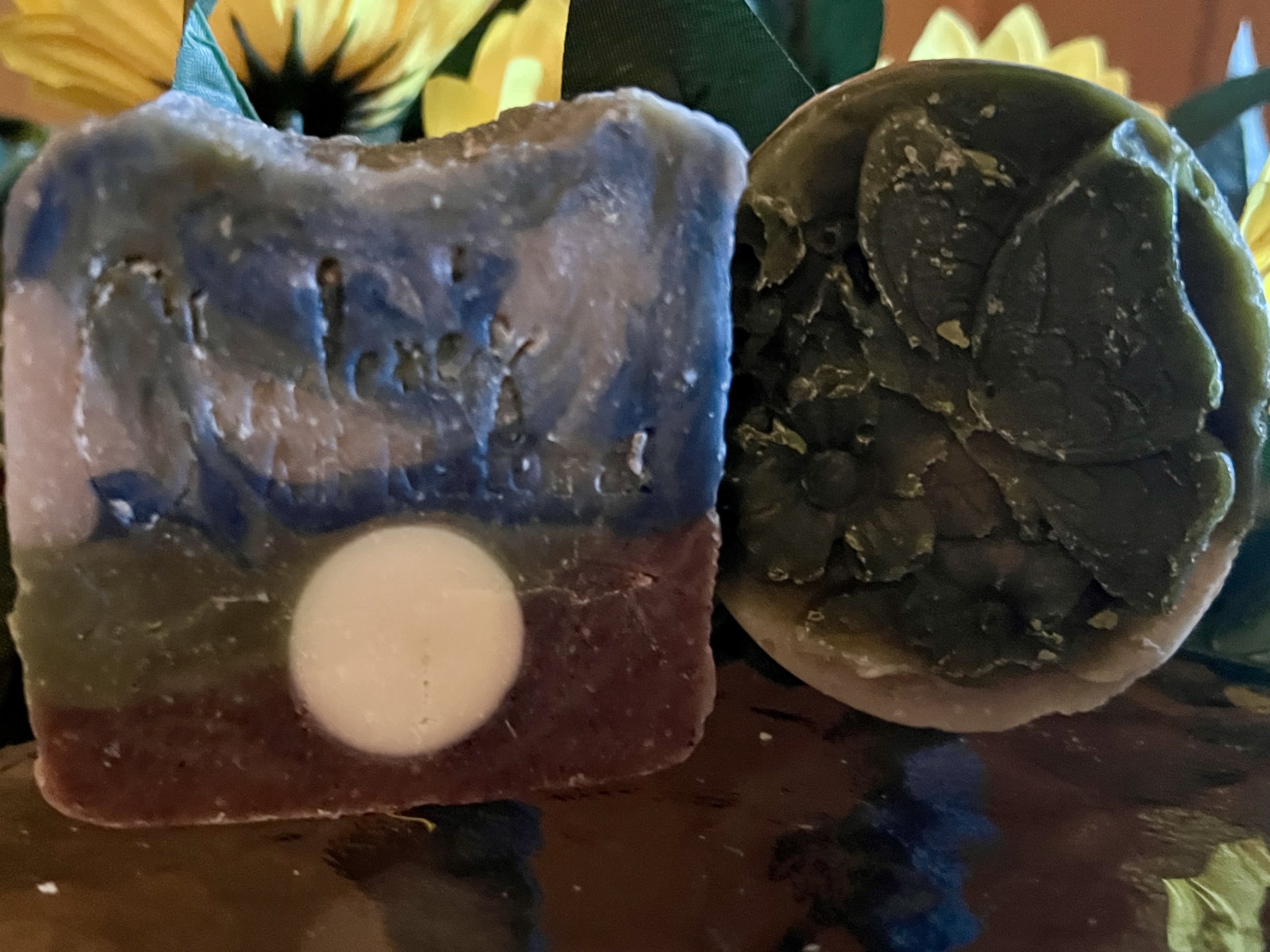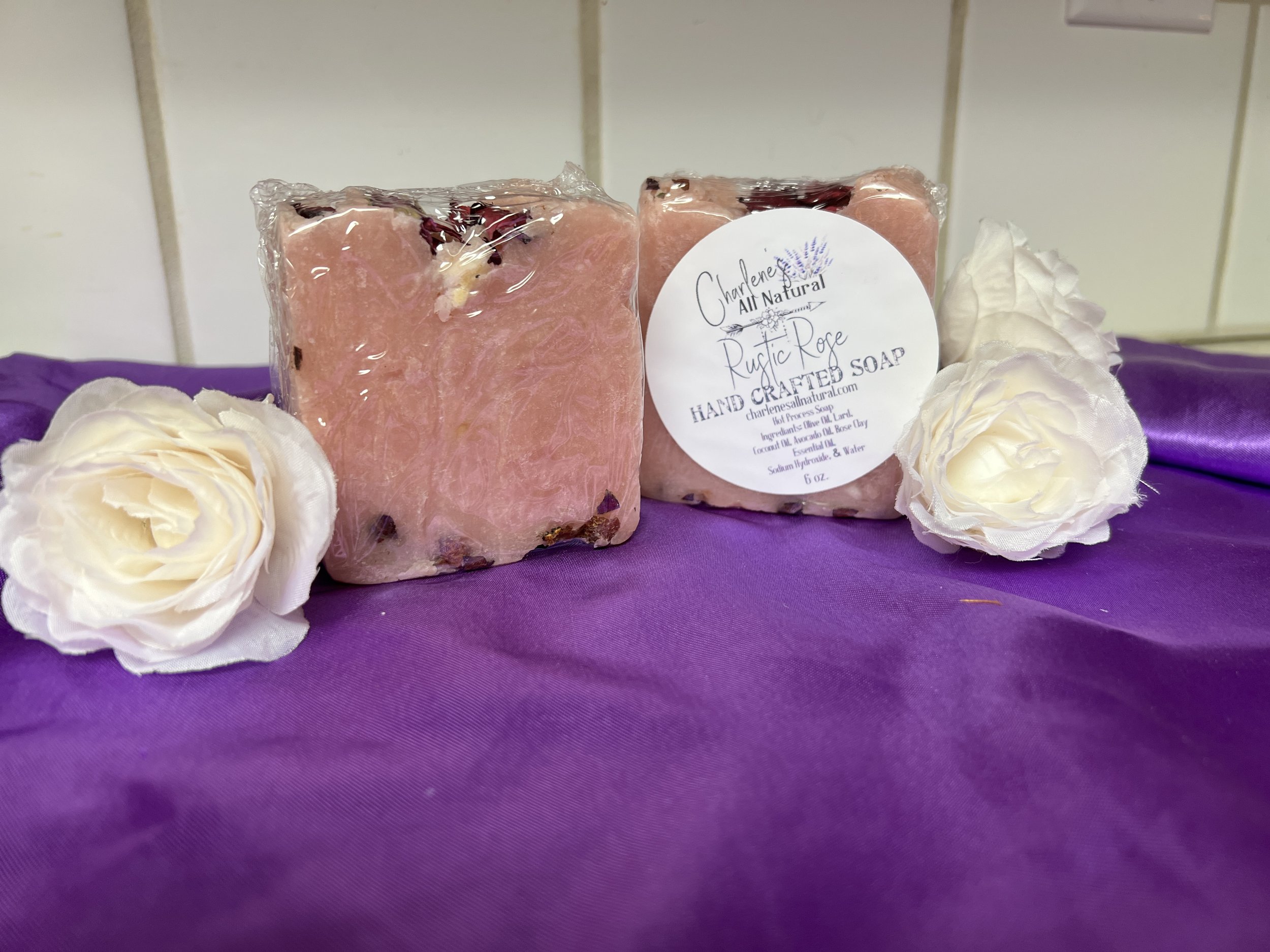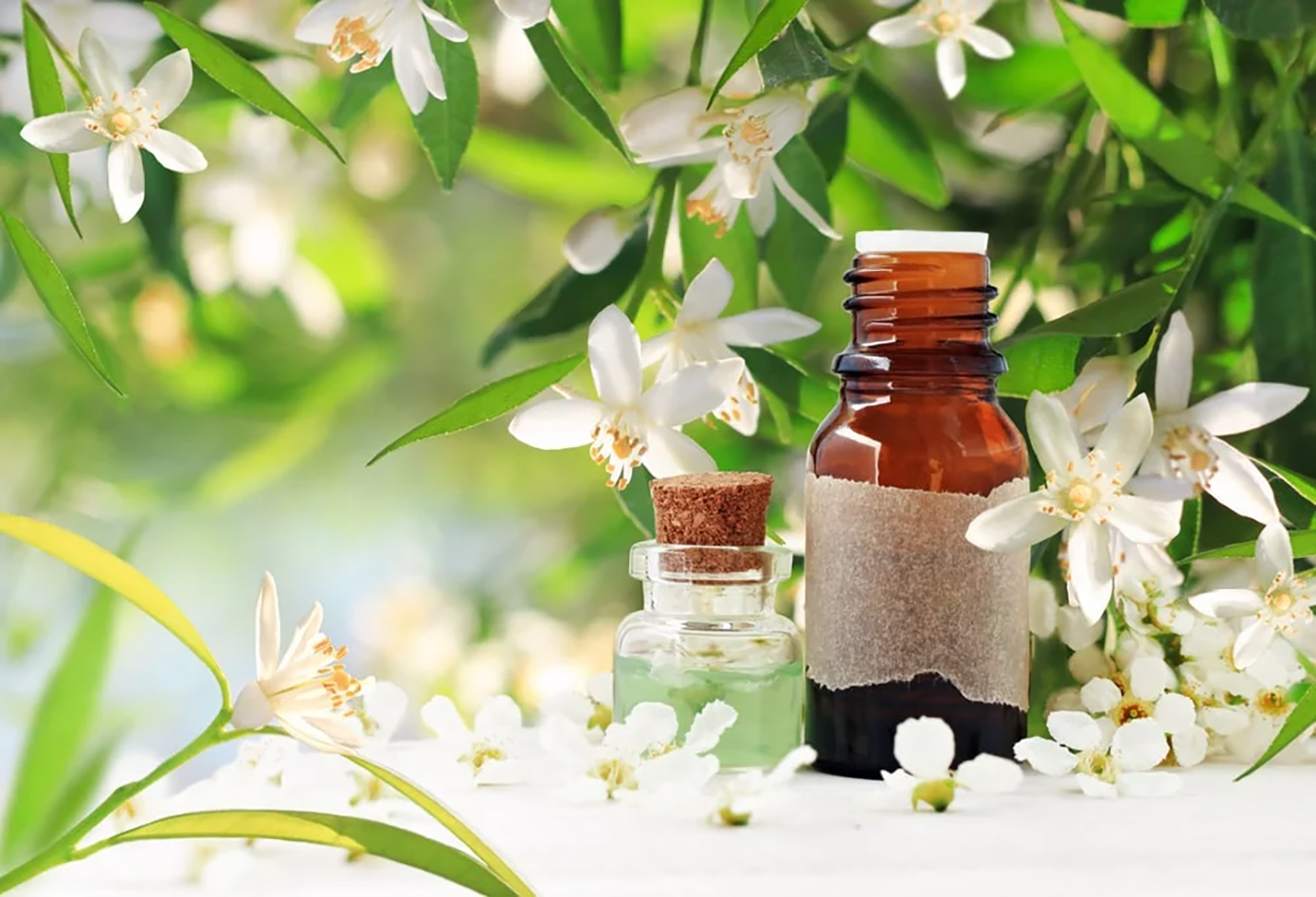Quick Facts About
Additives and Process
-

Essential Oils
Essential oils are quite different from fragrance oils. They are naturally plant-derived, typically extracted through a steam distillation process. These essential oils are incredibly powerful and concentrated, so it’s important to note that not all of them are recommended for use by pregnant women. Incorporating the benefits of essential oils into your daily skin care routine is a wonderful way to offer a luxurious, soothing experience for your senses, while also reaping many natural health benefits. There are oils known for their calming properties, like lavender, or oils that provide an energizing boost, such as peppermint. Beyond their aroma, essential oils offer healing benefits that can help with common issues like acne, muscle aches, joint pain, or inflammation. Sourced from plants all around the world, essential oils are cherished for their therapeutic powers and holistic goodness.
-

Herbs Used in Soapmaking
Herbs play a truly crucial and magical role when making artisan soap. With such a wide variety of choices available, the possibilities for creativity and healing are truly endless. One wonderful way to use them is to gently infuse them with oil over time. This delicate process allows the essential oils and healing properties to be extracted from the plant, resulting in a much more potent and effective product that nourishes the skin deeply. In addition to infusing, you can also add whole herbs or finely chopped bits directly into the soap base, which provides an added texture and beautiful visual interest. The thoughtful combination and creation of different herbs can give you a uniquely crafted, nourishing, and luxurious soap experience that truly delights both your senses and your skin.
-

Natural Colorants and Textures
Herbs, flowers, and beneficial clays provide an abundant and vibrant source of inspiration and natural ingredients. Even everyday weeds, often overlooked, offer some wonderfully beneficial herbal constitution that can be used thoughtfully. Infusing botanicals with oils is a beautiful and healing way to add rich, natural color and gentle nourishment to your soap. There are many creative ways to incorporate natural colors that remain pure, safe, and soothing to your skin. Activated Charcoal, for instance, creates a stunning deep black texture while effectively detoxifying and rejuvenating your skin. There is also an abundant variety of colored clays, each with unique added benefits; they offer gentle exfoliation and make your soap visually captivating and earth-connected while being safe for your skin.
-

What is Cold Process?
A traditional and time-honored method in which natural oils and fats are carefully combined with lye (sodium hydroxide) at room temperature. This gentle process initiates a fascinating chemical reaction known as saponification, which naturally produces pure soap along with nourishing water and glycerin, all without requiring any external heat sources or artificial additives. After the mixture is thoughtfully prepared, it undergoes a slow and patient curing period that typically lasts between four to six weeks, allowing the soap to harden, mature, and develop its wholesome qualities perfectly.
-

What is Hot Process?
Hot process soap often has a more rustic and textured appearance compared to cold process soap, which many soap-makers find particularly appealing for its charming, handcrafted aesthetic. This method allows the chemical reaction known as saponification to complete immediately during the cooking phase, ensuring a thorough blend of oils and lye. By cooking the soap for an extended period, the ingredients fully saponify, resulting in a soap that is typically ready for use anywhere from immediately up to 24 hours after the process is finished, making it a wonderfully efficient option for natural soap crafting.
-

All Oils and Butters Are Not the Same
Each oil imparts its own unique qualities to the final handcrafted soap product. Oils that are high in fats tend to have excellent lathering and cleansing properties, while those rich in unsaturated fats are wonderful for providing moisture and deep conditioning to the skin. Natural soaps can be beautifully customized by blending a variety of oils and butters, allowing to tailor each bar to meet very specific skin care needs. For example, adding shea butter enriches the soap with extra moisturizing benefits, perfect for dry or sensitive skin. Commonly chosen ingredients include olive oil, coconut oil, along with nourishing shea and cocoa butters. The different oils and butters work in harmony to create the ideal balance of hardness, luscious lather, and moisturizing properties that make each bar uniquely beneficial.
-

Superfats and pH
Superfat refers to the excess oils that remain unsaponified in the finished soap, which play a significant role in enhancing the moisturizing qualities of the soap. Each type of oil used in soapmaking brings its own unique effects and benefits, contributing to the overall texture and nourishment of the bar. Most homemade soaps are crafted using a blend of different oils, allowing for a balanced and enriching soap experience. By intentionally adding extra fat to the soap, you can boost the natural skin-loving properties of these oils, creating a gentler and more hydrating bar. Additionally, pH is an important factor—it measures the acidity or alkalinity of a solution. A pH of 7.0 is considered neutral, serving as a helpful baseline for creating a well-balanced, skin-friendly bar of soap.
-

Read and Understanding Your Ingredients
It’s really important to truly understand the ingredients you’re putting on your skin. More and more people are choosing natural soap as a healthier, gentler alternative to conventional commercial soaps that often contain synthetic chemicals. Natural soap is lovingly crafted with simple, pure, and wholesome ingredients like fresh herbs, essential oils, and botanicals — all known for their amazing, skin-loving properties. These soaps avoid harsh chemicals that can strip your skin of its natural oils and cause dryness or irritation. Instead, natural soap nourishes, moisturizes, and soothes your skin deeply. Plus, with no artificial dyes or harmful additives, and minimal packaging waste, choosing natural soap is an earth-friendly win that supports both your skin and the planet.
Sara Williams
“Through my soul may set in darkness, it will rise in perfect light; I have loved the stars too fondly to be fearful of the night. ”
Unknown/Self Journal
“Change the Changeable,
Accept the Unchangeable,
and Remove Yourself
from the
Unacceptable .”
Danielle Orner
“Life is a balance between what we can control and what we cannot. I am learning to live between
Effort and
Surrender”
